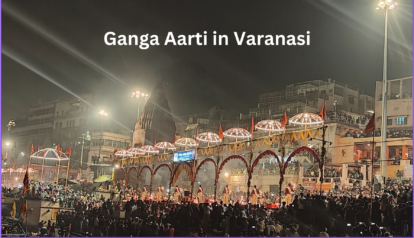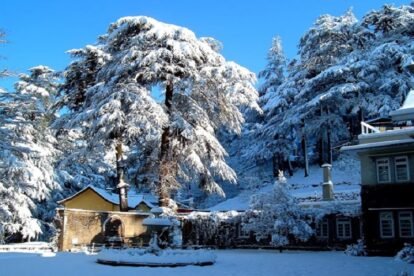All you need to know Kawad Yatra including 2023 guidelines
Posted on July 7, 2023 by Ghoomophiro

While Hinduism has several pilgrimages, the Kawad Yatra has gained considerable popularity over the years, and it attracts a large number of devotees from different parts of India. It is particularly prominent in the states of Uttar Pradesh, Uttarakhand, and Rajasthan, where the yatra has been a part of the local culture for generations. This blog shall cover all you need to know about Kawad Yatra, with a special focus on 2023.
All you need to know about Kawad Yatra
Kawad Yatra is a religious pilgrimage in India that is dedicated to Lord Shiva, one of the holy trinities of Hindus and the God of destruction. It is an annual event that takes place during the Hindu calendar month of Shravan. Normally, Shravan or Savan covers a period of nearly 29 days from July to August. However, this year it shall have a total of 59 days, making the Kawad Yatra even more special. The yatra involves devotees carrying water from the holy river Ganges in Haridwar or other sacred places and walking long distances to offer it at Shiva temples.
Kawad Yatar is an arduous pilgrimage, and the people carrying it are called Kawadiyas. Kawadiyas carry special pots called Kawads on their shoulders by suspending them from a bamboo pole. The awards are filled with water from Ganga, which is the holiest river according to the Hindu religion. The award is decorated with colorful cloth, flowers, and many religious symbols. The devotees must undertake this arduous journey on foot, which often involves covering long distances of several kilometers or even hundreds of kilometers, depending on their dedication.
The history of the Kawad Yatra dates back to India’s ancient times and is deeply rooted in Hindu mythology and religious traditions. The origins of the yatra can be traced at least to the Puranas, which are ancient Hindu scriptures.
The mythological legend related to Kawad Yatra is that of Samudra Manthan. Samundra Manthan literally means churning of the ocean and refers to the Hindu legend of the churning of the cosmic ocean by gods and demons who were trying to obtain the elixir of immortality (Amrit). According to Hindu mythology, a pot of poison called halahal emerged from the ocean during the Samudra Manthan. This poison was so potent, according to myth, that it had the potential to destroy the entire universe. To save the universe, Lord Shiva drank the poison. However, instead of swallowing it, he held it in his throat, which turned blue. Thus earning him the nickname “Neelkanth,” meaning “the one with a blue throat.”
The Kawad Yatra is celebrated as a way of showing gratefulness to Lord Shiva. Devotees undertake the pilgrimage to carry the holy water from the Ganges, which symbolizes the divine nectar, and offer it to Lord Shiva at various temples as a sign of their gratitude and as a small gesture of offering relief to the almighty Shiva, who still holds poison in his throat to save the universe.
By participating in this arduous journey, devotees seek blessings and forgiveness for their sins, and they express their devotion and gratitude to Lord Shiva. The Kawad Yatra is a significant event for devotees of Lord Shiva, and it is believed to fulfill their wishes and bring blessings. The yatra is also an excellent way for devotees to demonstrate their devotion and seek spiritual growth. Along the way, devotees chant various prayers and hymns dedicated to Lord Shiva, sing Shiva artis and bhajans (devotional songs), and participate in religious rituals.
As for the route of the yatra, different regions in India have their own traditions and rituals associated with the Kawad Yatra. For example, in the state of Uttar Pradesh, devotees might undertake the yatra to the famous Shiva temple in Sultanganj, while in Rajasthan, the yatra is often associated with the temple of Neelkanth Mahadev in Pali district.
The Kawad Yatra is not only a pilgrimage but also has also become a cultural event, attracting not only religious devotees but also tourists who are fascinated by the grandeur and devotion displayed during the pilgrimage.
Kawad Yatra, sometimes called Kanwar Yatra, is just one of the ways in which devotees show their devotion to Lord Shiva; there are also Sawan Somwar vets – the fasts associated with the cosmic couple, that is, Lord Shiva and his consort Maa Parvati. That is why the two-month-long Savan holds special spiritual importance for Hindus.
There are also some other reasons for the importance of this month for Shiva Bhakta. For example, Lord Shiva would go to his in-law’s house every monsoon, and he was welcomed to earth with a Jalabhishek. On Shiva Purnima, which is the full month day of this month (and will come twice this year), Lord Shiva himself takes the form of water and receives cosmic energies from the same.
Frequently Asked Questions (F.A.Q.s)
There are several questions that the readers may have about Kawad Yatra. The following are some of the most Frequently Asked Questions (F.A.Q.s):
Question: Why does Savan this year has 59 days? Isn’t that twice as long as a typical month in the Indian calendar?
Answer: Savan this year has 59 days which means there will be two months of Savan this year. The extra month is also called Adhik Mas (additional month), Malmas, or Purusthotam Mas. This is a periodic but rare phenomenon that occurs after 19 years. The Hindu calendar is a lunar one and has 29.5 days in a month to ensure that it doesn’t deviate too much from seasons; an extra month is added every 19 years.
Question: What are some of the rules for Kawad Yatra?
Answer: The following are rules to be followed for Kawad Yatra:
- No transportation is allowed. The whole pilgrimage must be made by foot.
- The pilgrim cannot drink or even touch any type of intoxication, drugs, drinks, or meat. No form of tamasic food is allowed.
- Don’t touch Kawad without bathing first.
- Don’t let Kawad ever be touched by leather.
- Don’t ever place Kawad below a bed or any piece of furniture.
- Don’t place Kawad over your head.
If the reader has any other questions, they should feel free to ask them here.





